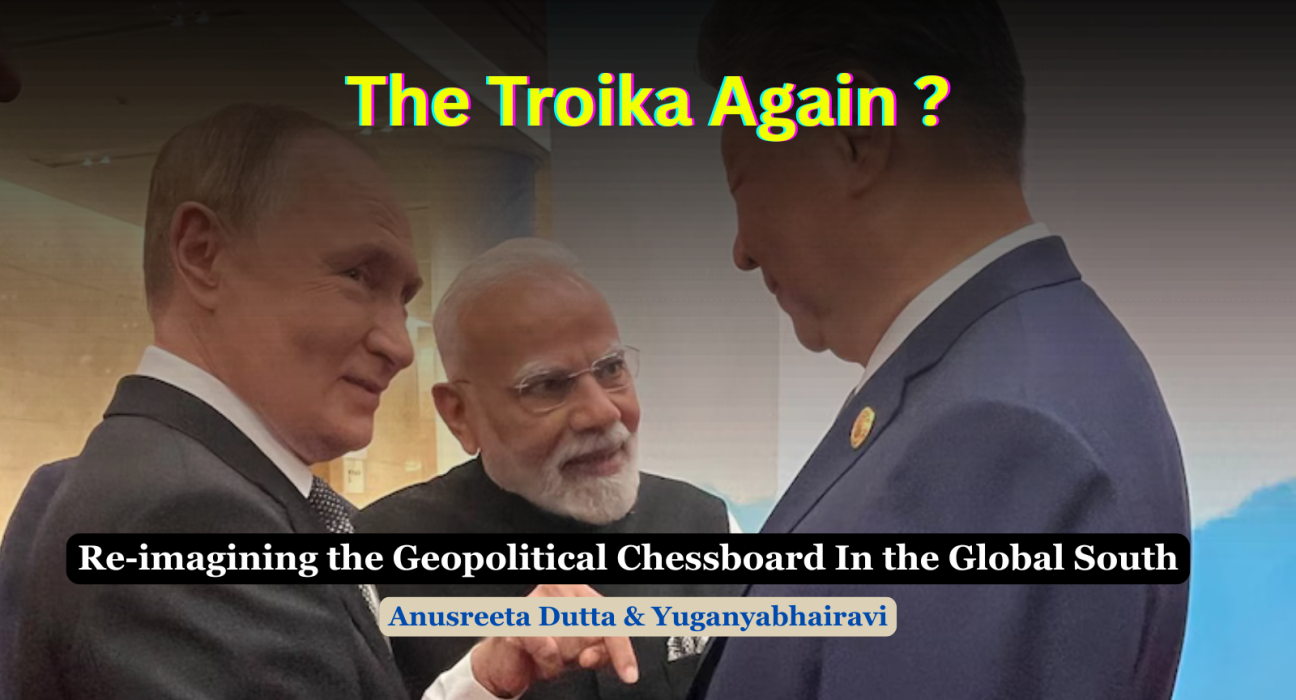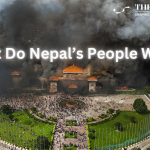The strain in the U.S-India relations is now an open secret for the world. “Ponder and deliberate before you make a move” is a valuable quote from the ancient text ‘Art of War’; which American foreign policy has missed. The U.S has shockingly slapped one of the highest tariff rates on India. As per the experts the tariffs are “economic blackmail” to manoeuvre India while the Ministry of External Affairs, India has also condemned the tariffs as “unfair and unjustified” asserting the country’s right to make energy decisions.
The pace of tanking of the Modi-Trump bond, which had developed over years, is jarring as it has soured in just months, growing the mistrust of the U.S. in India among both the strategic community and the common man alike.
THE ECONOMIC ARM-TWIST
As the U.S. and India have already began their joint military exercise, Yudh Abhyas 2025 in Alaska and NISAR continues to be an ambitious collaboration between NASA and ISRO. These seemingly positive engagements between two nations that would have been perceived as encouraging few months ago; now appear lacklustre.
Apart from the economic hostility, the open psychological hostility displayed by the Trump administration is appalling. The close aide of Trump, Navarro maliciously branding the Russia-Ukraine conflict as “Modi’s War” and falsely accusing “Brahmins” for profiteering from the same, is nothing but a pathetic display of blame shifting when the peace promise made during the MAGA campaign has failed. In another incident, the arrogance of dollar supremist was blatantly displayed on Fox News by mocking the use of rupee as trade currency in BRICS.
Even if the tariffs are uplifted in near future, the psychological divide will not be easy to bridge. It is for this reason, that American economist Jeffrey Sachs called “Trump a great unifier of BRICS”. After the pictures from recent SCO summit went viral, Finnish President warns west against sidelining the Global South, ‘especially India’. But certainly Trump’s tariff move has inevitably ignited hunger for greater strategic autonomy in India and rest of the Global South.
THE GOOD-OLD ALLY RUSSIA
Russia has time and again reassured India of their camaraderie. Not surprising but still reassuring was the favourable stance of Russia post the barbaric Pahalgam terror attack on India, earlier this year.
As for the India-Russia trade, it has grown from USD 1.4 billion in 1995 to USD 68.7 billion in FY 2024-25. Additionally, Indian companies are keen on investing in Russia’s oil, gas, pharmaceuticals, and IT sectors, while Russian firms are focused on India’s energy, infrastructure, and manufacturing.
In the recent SCO summit held in Tianjin, the two leaders reaffirmed their support for further strengthening of the Special and Privileged Strategic Partnership between the two countries. PM Modi also expressed to President Putin his eagerness to welcome him to India for the upcoming 23rd Annual Summit 2025.
In a touching moment during the live broadcast of their bilateral meeting, Putin delivered a powerful message to the global audience, emphasising that the relationship between India and Russia transcends political affiliations because the citizens ‘on both sides’ endorse this partnership.
THE LEERY-POTENTIAL ALLY CHINA
The China-India have had a contentious border issue for decades. Also, India has faced a long-standing trade deficit with China, causing worry for New Delhi. But the most contentious of issue is the persistent appeasement of Pakistan by China.
When in the recent SCO summit, China urged India for resetting the bilateral ties by highlighting the significance of two neighbours and emerging economies, both being at a critical stage of national development. Such grand promise of a shared high future would have initiated hope in India; had the similar promise not been made to Pakistan around the same time.
Yet, even before the SCO summit kicked off, the delegation from India and China met to discuss border management principles at diplomatic and military levels with focus on de-escalation. This shows that in the wake of tariff war, New Delhi is choosing to walk the tight rope in the hope for a stronger Indo-China ties. While addressing the territorial and trade issues with China, the potency of the cultural diplomacy cannot be ignored. Inspiration must be drawn from the philosophical observation of Hu Shih that India culturally dominated China for 20 centuries without military force.
EXPLORING DIVERSIFICATION APPROACH
India and China are one of the biggest trading partners of Russia, which makes Moscow comfortable with the bolstering of the trioka. However, diversification is the need of the hour in this labile world of geo-politics. India has a few more potential allies.
At the recent India-Japan Economic Forum, a ten-year roadmap was shared for economic and functional cooperation in eight key areas: economic relations, security, mobility, sustainability, technology, health, people-to-people exchanges, and partnerships between Indian states and Japanese prefectures.
The high tariff threatens India’s MSME sectors like textiles, gems and jewellery, leather, and marine products risking 55% of India’s exports to the US. Apart from India, Brazil also faces the highest tariff rate of 50%. Hence, when the video from BRICS 2025 meeting depicting warm interaction between Brazilian President Lula and PM Modi resurfaced the internet, it quickly became viral as symbol of the Global South solidarity.
WHAT LIES IN MURKY WATER?
The weaponisation of tariffs by Washington has always been a looming possibility. Now when the worst fears have been realised, What lies ahead for India? India will have to endure economic hardships, with immediate job loss in the affected sectors. However, this situation also gives an impetus to India to strive, with a sense of urgency towards the Atmanirbhar Bharat vision in critical sectors like green energy, data localisation, and honing the manufacturing capabilities amongst others. In this rapidly evolving competitive world, self-reliance is the only master key, for any nation, to ensure strategic autonomy.
Perhaps as the Summit came to an end, having departing together in the wheeled fortress, such sensitive issues might have been on radar by PM Modi and President Putin, leveraging the hour-long utmost confidential space.






